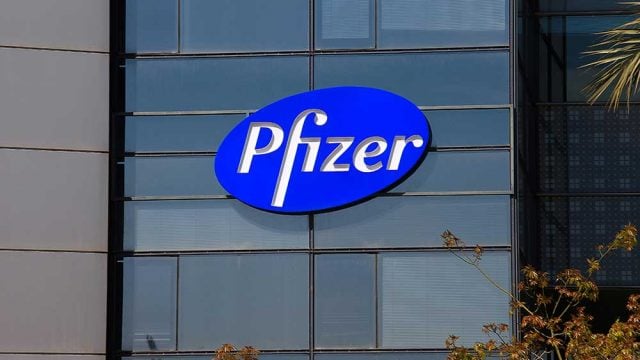Pfizer Inc. (NYSE: PFE), the world’s leading drugmaker, recently reported its Q1 2025 results, surprising Wall Street with higher-than-expected profits. Despite lingering fears over its long-term vaccine pipeline and outside policy risks, the company has remained resilient amid economic uncertainty and geopolitical tensions.
Q1 Earnings Beat Estimates
Pfizer said it had first-quarter 2025 adjusted profit of 92 cents a share, surpassing analyst estimates of 66 cents a share, based on LSEG data. The company was able to beat estimates partly by prioritizing strategic cost reductions, with the benefit of solid sales of its heart medication, Vyndaqel.
Total quarterly revenue was $13.70 billion, falling short of the $13.91 billion Wall Street had expected. But investors were pleased with the surprise earnings, particularly after a bumpy beginning to the year.
Stock Performance: Some Gains, But Still in Red
Pfizer shares have declined 13.1% year to date, a sign of the wariness of the markets and general uncertainty regarding the pharma space. But after the earnings report, PFE shares rose 1% in premarket trading, a sign of some new investor optimism.
The stock price on April 29, 2025, is $23.05 with the pre-market high being $23.16. The 52-week high and low of PFE are between $20.92 and $31.54, indicating a huge volatility and reflecting investor fears of future growth.
The P/E ratio of the stock is 16.38 with a decent dividend yield of 7.46%, which can be attractive to income-hungry investors irrespective of subdued capital appreciation.
Regulatory and Political Headwinds Ahead
Investors are closely watching the policy stance of Robert F. Kennedy Jr., the new U.S. health secretary. Known for his vaccine skepticism, any policy shift regarding immunization guidelines could affect Pfizer’s COVID and flu vaccine revenues.
Also, expected tariff increases and trade tensions with China may affect the pharma supply chain. China is a significant source of raw materials and manufacturing inputs for some U.S.-based pharma companies, including Pfizer. Tariff increases in costs may squeeze profit margins in future quarters.
Also read: SoFi Stock Watch: Q1 2025 Earnings Set for April 29
Focus on Vyndaqel and Core Portfolio
Pfizer’s solid performance in this quarter was spearheaded mostly by the performance of Vyndaqel, a heart drug for treating transthyretin amyloid cardiomyopathy (ATTR-CM). As revenues related to COVID-19 continue to drop, the firm is increasingly turning to core drugs such as Vyndaqel, Ibrance, and Eliquis to fuel growth.
Pfizer’s management has also focused on making additional R&D expenditures, especially in oncology, anti-inflammatory, and rare disease medicines. The firm is driving aggressively in acquisitions and licensing transactions to resupply its pipeline, especially with patents set to expire.
Is Pfizer Stock a Buy
Pfizer provides a decent dividend, strong brand, and steady revenue in several therapeutic areas. But there are still headwinds like shifting vaccine policy and trade threats and cost pressures overseas.
For long-term investors, however, the present price band can be an opportunity. The high dividend yield of the drugmaker gives it a desirable facet for income funds. Growth investors will have to see more robust tailwinds from its pipeline for PFE to regain highs.
Looking Ahead
The coming quarters will be important for Pfizer. Shareholders will be looking at how effectively the company adapts to challenges in the global supply chain, regulatory challenges, and shifting health policies. Further performance by priority drugs, hostile M&A activity, and draconian cost controls will likely drive when and if the stock continues to recover.
Meanwhile, Pfizer’s Q1 surprise presents a snapshot of operating strength, a bullish sign for a stock that continues to shake off post-pandemic uncertainty. All in the growth of Pfizer shows how a smart decision can help a business cross everybody’s expectations.








